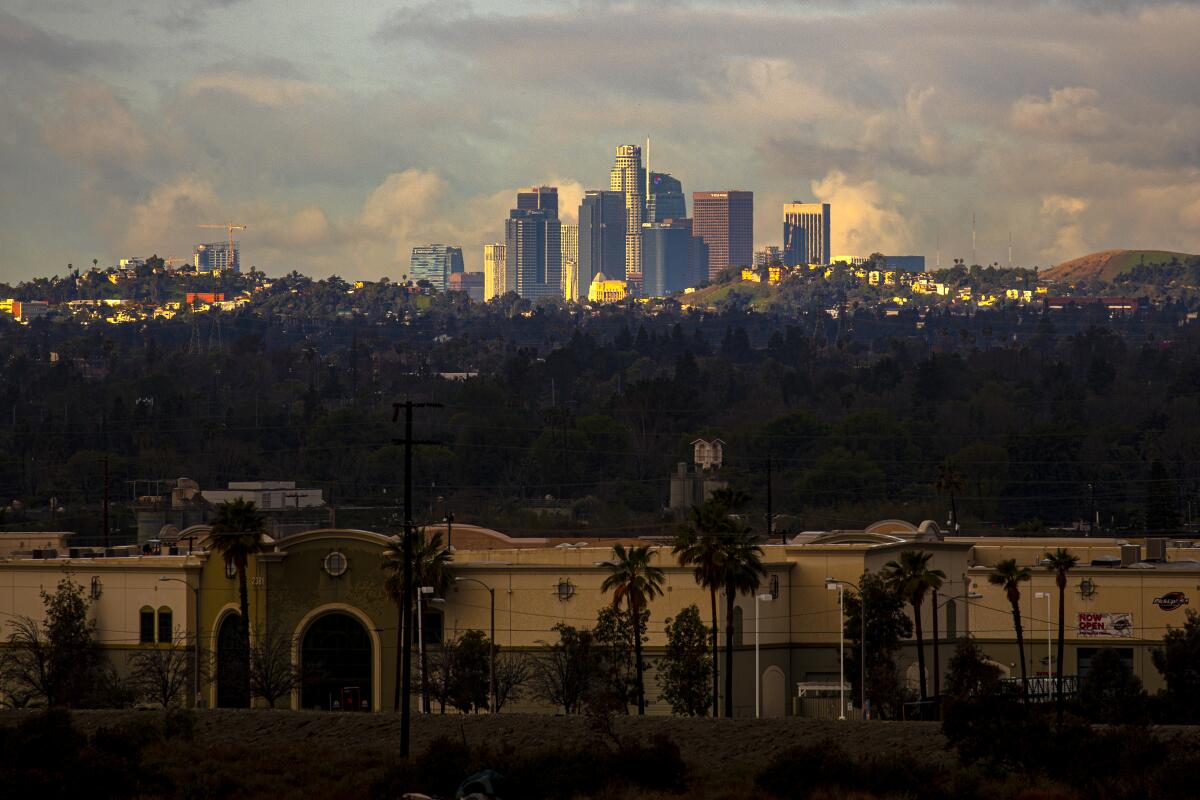L.A.’s history is often whitewashed, romanticized and censored. A new push to tell the truth

- Share via
Los Angeles, as the writer Octavia Butler once mused in a notebook, “forms and shatters, forms and shatters.”
This has never been a place with a conventional relationship to its history.
Where little blue plaques and carefully preserved structures have proliferated elsewhere, L.A.’s official stance on the past has typically been both grander and more opaque — heavily romanticized, carefully edited, booster-ized, whitewashed and perpetually repackaged in service of whatever comes next.
“We have always had our civic gaze fixed on the future,” Christopher Hawthorne, the city’s first chief design officer and a former Times architecture critic, told me. “To the extent that we have had a coherent sense of identity, it has been very much shaped by that perspective.”
But what about the past? And how to make sense of it?
In late 2019, a Civic Memory Working Group impaneled by Mayor Eric Garcetti — a diverse array of thinkers that included 40 leading historians, architects, artists, Indigenous leaders, city officials, scholars and cultural leaders, according to the city — began meeting to explore how Los Angeles could more accurately reflect the brightest and darkest moments of its history. Hawthorne coordinated the group’s efforts, and last month, it released its recommendations.
The 166-page report, produced by the Huntington-USC Institute on California and the West with support from the Getty Foundation, “begins with a simple provocation in the form of a question: What might it mean if the city of the future could simultaneously be lauded for its regard for the past?”
The group’s recommendations include building a memorial to the victims of the 1871 Chinese Massacre, appointing an official city historian, looking into the creation of a city museum, an audit of monuments on publicly accessible land, and developing strategies to recontextualize or remove those that are outdated or fraught.
I spoke to Hawthorne about the Civic Memory Working Group and the sometimes slippery nature of L.A. history.
Here’s some of our conversation, condensed and lightly edited for clarity.
I know the working group first convened in November 2019, but I imagine the idea was probably simmering long before then. Can you walk us through how it came to fruition?
It was something I was interested in trying to pull together pretty soon after I joined the mayor’s office in April 2018. At that point, there was already beginning to be a national conversation about what to do with controversial monuments and memorials, particularly Confederate monuments. I was interested in what that conversation meant for Los Angeles. Of course, we don’t have Confederate monuments to the same degree, but we have plenty of fraught monuments and memorials that reflect a complicated relationship with history.
So I wanted to see if we could frame some of these questions in a way that was specific to Los Angeles and its particular — and I would say even peculiar — relationship to history. And when I say peculiar, I mean that we have arguably been more aggressive in clearing or whitewashing difficult aspects of our history than most American cities, even.
Why is that?
There are a number of reasons. I think we have relied to an unusual degree on boosterism and mythmaking in establishing our civic identity, particularly in terms of establishing an Anglo elite here in the late 19th and the early 20th century. We have been very much in love with our reputation as the city of the future. We have been headquarters of the Hollywood dream factory.
I know the group was already deeply engaged in discussion about monuments and erasure last summer, when the broader cultural reckoning around these issues hit an inflection point. Did that shape or affect your work?
It added to the urgency. And the sense that the work was timely and it was a good thing that we had done some of the work already, so we weren’t solely being reactive to what was happening. But we could try to incorporate discussions about that “reckoning,” because that was a word that we had been talking about already.
Most specifically, we talked a lot about how the suffering we were seeing around the city last year — public health suffering related to COVID-19, suffering related to racial and other kinds of injustice — had deep roots.
It’s difficult to really understand the unequal toll that the COVID-19 pandemic was taking on the city, for example, without understanding some of the historical forces that we had been talking about and trying to grapple with — whether that’s redlining housing policy, freeway construction, the ways in which the city actively sorted residential populations, often by race, across much of the 20th century.
So both the racial and social justice protests and the pandemic reflected a need for us to understand our history more clearly — particularly the parts of our history that we’ve tried to put aside.
More to Read
Sign up for Essential California
The most important California stories and recommendations in your inbox every morning.
You may occasionally receive promotional content from the Los Angeles Times.











